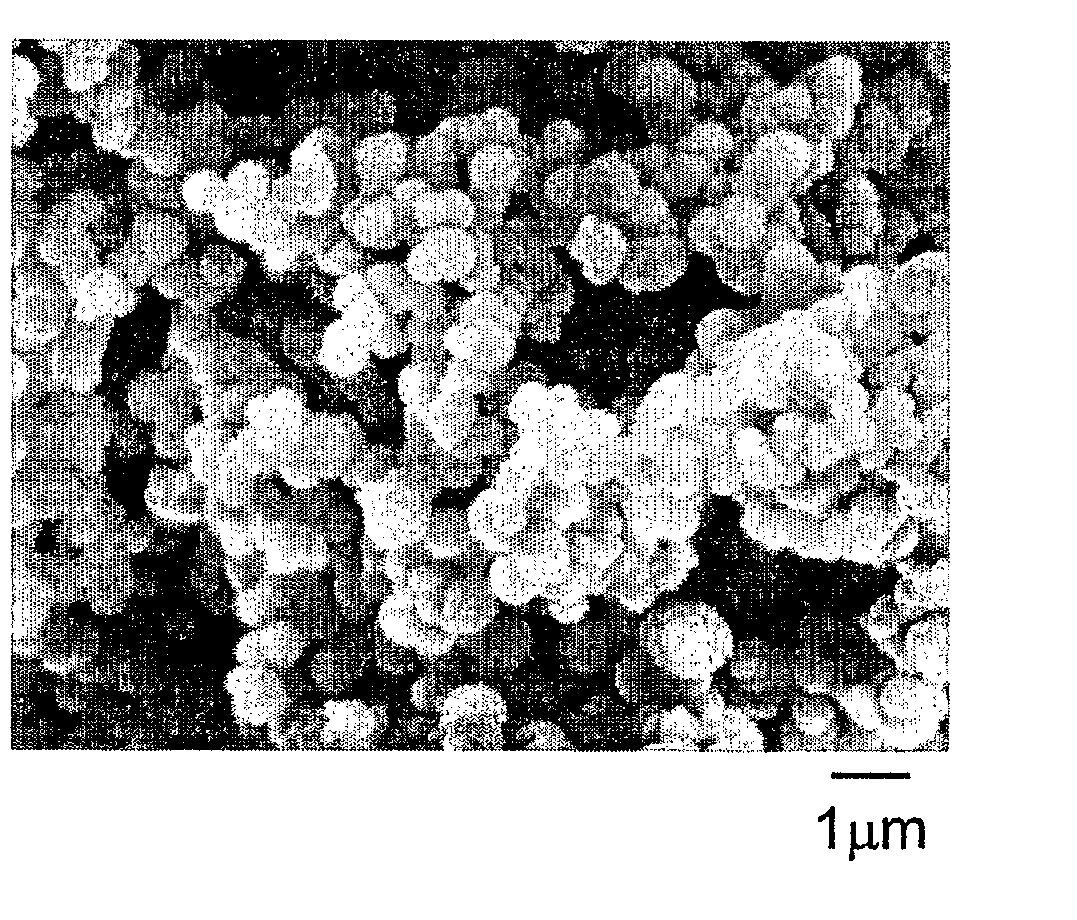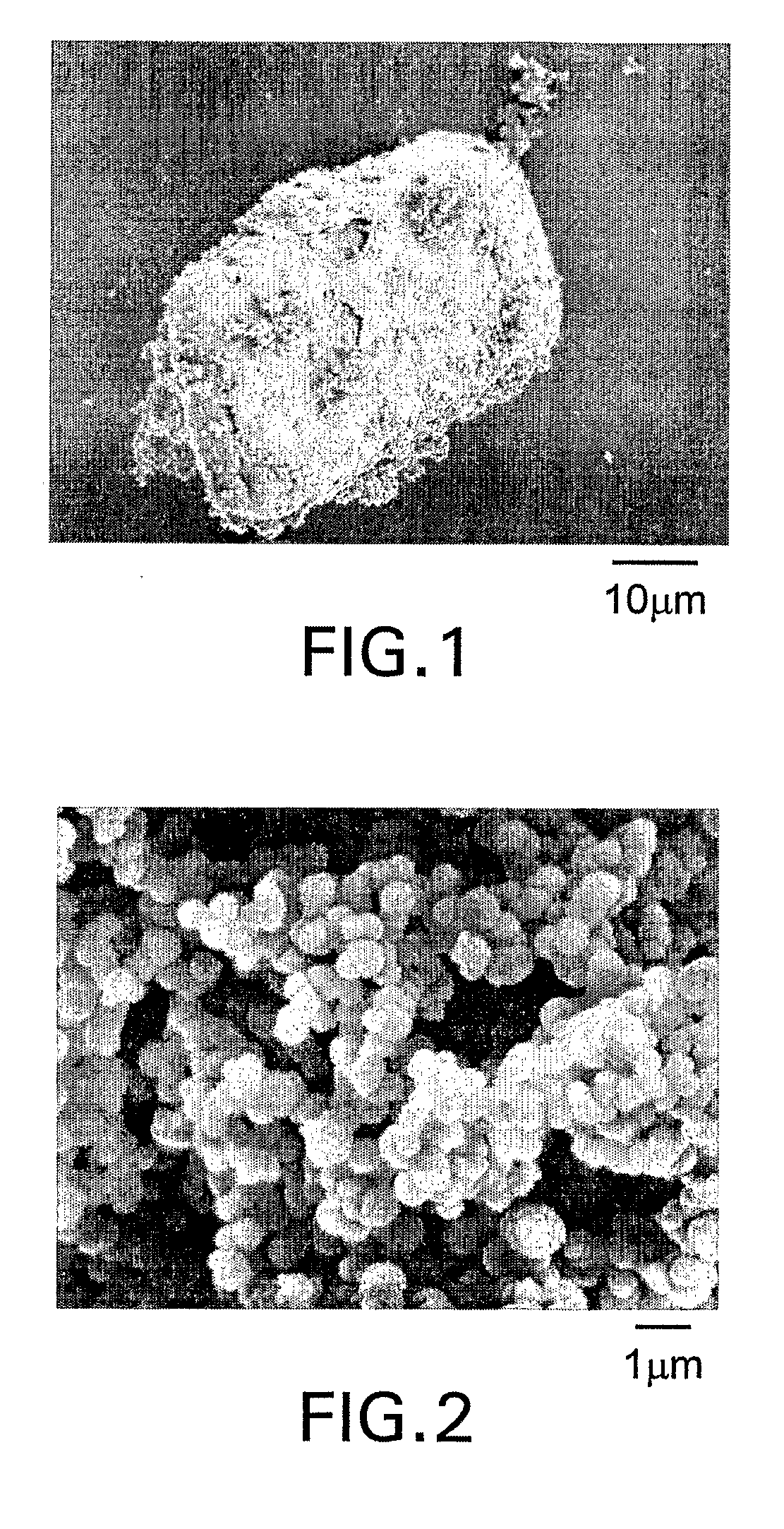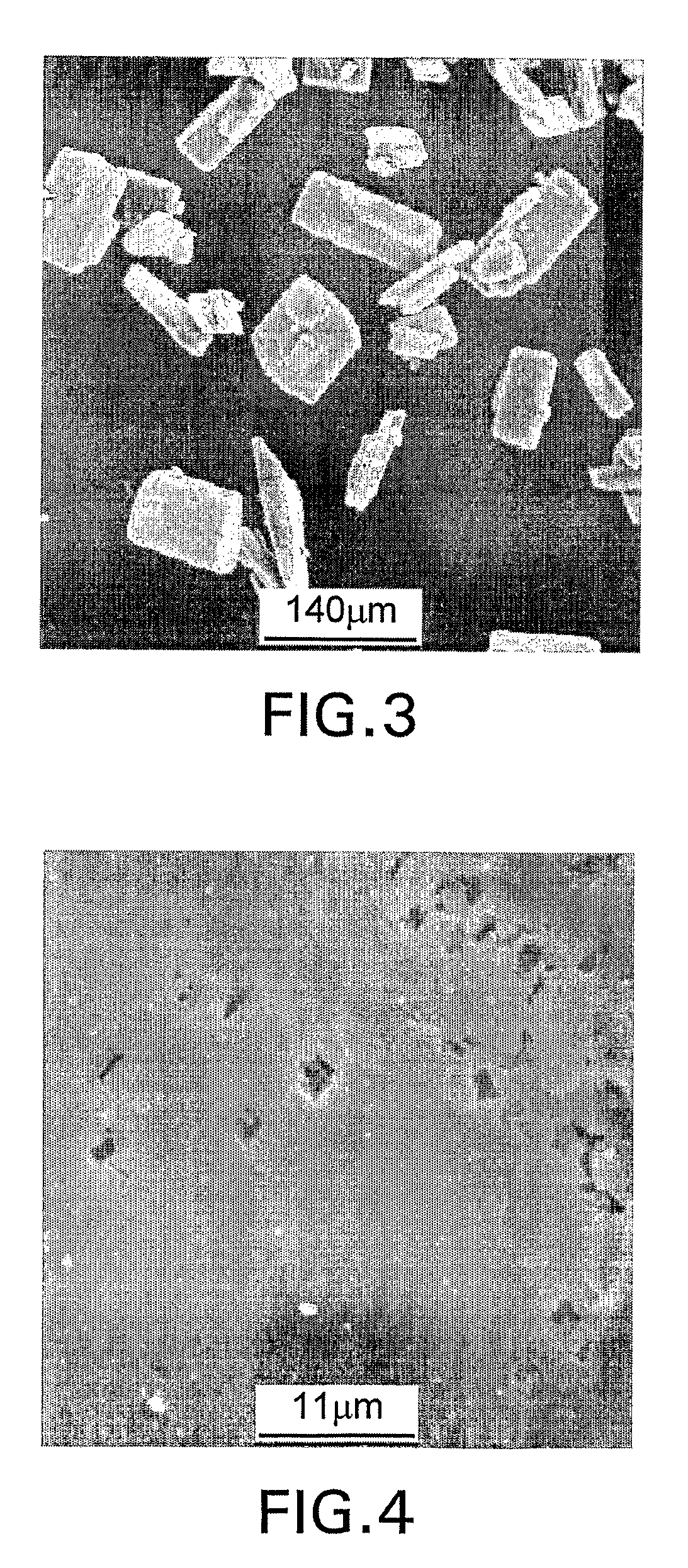Polymer Particles And Encapsulated Compositions Using Organoborane Amine Complexes
a technology of organoborane and amine complex, which is applied in the field of polymer particles and encapsulated compositions using organoborane amine complex, can solve the problems of high cost of spray drying operation, high energy consumption of processing equipment, and inability to achieve uniform dispersion and reaction of components,
- Summary
- Abstract
- Description
- Claims
- Application Information
AI Technical Summary
Benefits of technology
Problems solved by technology
Method used
Image
Examples
examples
[0069] The following examples are set forth in order to illustrate the invention in more detail.
example a1
Scanning Electron Microscopy
Micrographs
[0070] Dried polymer particles were characterized with a scanning electron microscope (SEM). A small amount of a sample was mounted on a SEM stub and coated with 15 nanometer sized platinum / palladium to promote conductivity while in the SEM. A JEOL JSM-6335 field emission SEM was used to capture digital images of the sample. The SEM was set at 5 kV and images, i.e., micrographs, were taken between 20× and 30,000× magnification. A JEOL JSM-6100 SEM along with a Noran Vantage energy dispersive spectroscopy (EDS) system was used to acquire elemental data. The SEM was set at 15 kv and spectra were collected for 60 seconds each on the surface of agglomerated particles.
[0071] In the following Comparative Examples 1-5 and Examples 1-13, all of the reactions were carried out at room temperature in a well ventilated laboratory hood. The active component (v) to be encapsulated in Examples 1-10 was zirconium (IV) acetylacetonate.
example 1
[0077] In a 0.25 ounce polypropylene cup, 0.06 gram of zirconium (IV) acetylacetonate was added to 1.0 gram of stearyl methacrylate, and 0.16 gram of a catalyst comprising triethylborane complexed with an equimolar amount of 1,3-propanediamine. The solution was mixed for 20 seconds in a Hauschild rotary mixer. In a two ounce glass jar, 1.6 gram of acrylic acid was added to 16.0 gram of decamethyltetrasiloxane, and stirred with a Teflon® coated stirring rod. The monomer solution was dispensed by a disposable pipette over a time of approximately 10 seconds, into the contents of the open glass jar, while stirring gently by hand using a Teflon® coated stirring rod. Immediately, a fluffy white dispersion of polymer particles formed in the solution. The polymer particles were harvested by removing volatile components in a rotary evaporator at 50° C. for 2 hours, at a pressure of less than 1 millimeter of mercury. Micrographs of the polymer particles obtained by the method of Example A1 sh...
PUM
| Property | Measurement | Unit |
|---|---|---|
| particle diameter | aaaaa | aaaaa |
| temperature | aaaaa | aaaaa |
| temperature | aaaaa | aaaaa |
Abstract
Description
Claims
Application Information
 Login to View More
Login to View More - R&D
- Intellectual Property
- Life Sciences
- Materials
- Tech Scout
- Unparalleled Data Quality
- Higher Quality Content
- 60% Fewer Hallucinations
Browse by: Latest US Patents, China's latest patents, Technical Efficacy Thesaurus, Application Domain, Technology Topic, Popular Technical Reports.
© 2025 PatSnap. All rights reserved.Legal|Privacy policy|Modern Slavery Act Transparency Statement|Sitemap|About US| Contact US: help@patsnap.com



